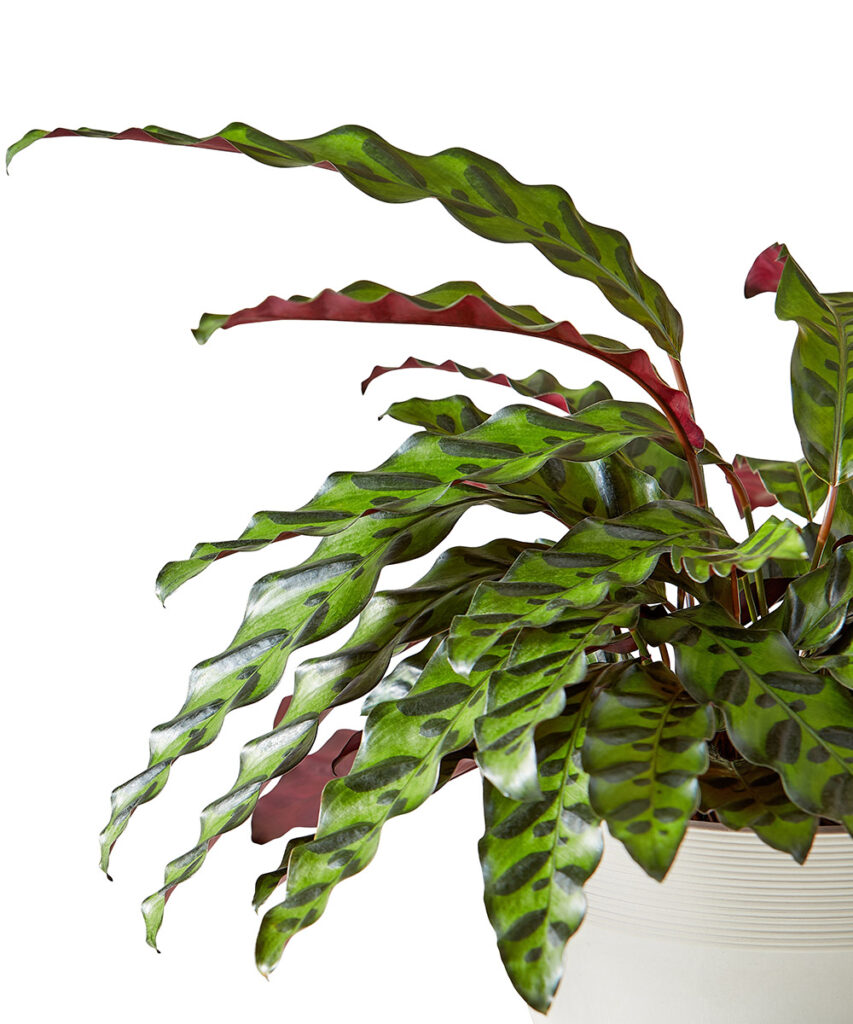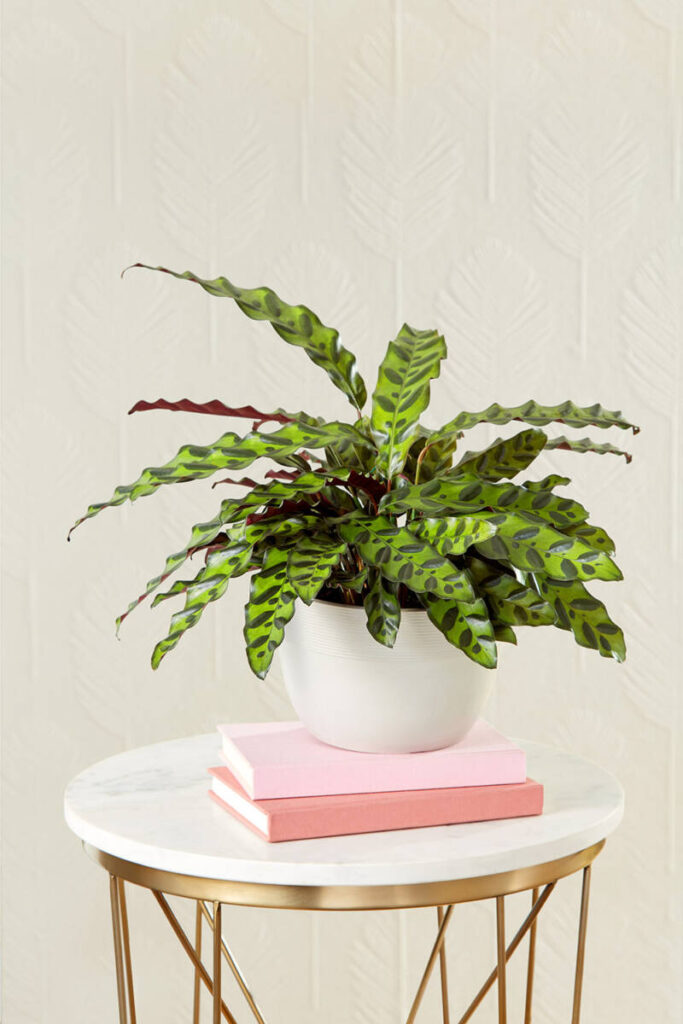Meet the 2023 Plant of the Year: Calathea Rattlesnake
This striking plant represents new beginnings, good luck, and positivity — three things we expect the new year to bring.
Dec 07, 2022
There's something very special about this plant. It brings a lot of joy and positivity to your well-being.
Interest in houseplants and indoor gardening spiked during the pandemic as people sought creative and nurturing ways to spend their time that bring them a sense of peace and joy.
1-800-Flowers.com believes that trend will continue in the upcoming year, even as our lives return to normal. The brand’s choice for the 2023 Plant of the Year, the calathea rattlesnake, embodies that hopeful outlook and the feeling that a brighter future awaits us.
The calathea rattlesnake (scientific name: Goeppertia insignis) is a fascinating plant with interesting attributes that indoor gardeners would enjoy. Its pointed, lance-shaped leaves undulate slightly with green-on-green ellipses, giving it a reptilian look. In the evening, when the sun goes down, the calathea folds its leaves upward, revealing its rich burgundy undersides, and then folds them back down in the morning light.
"The calathea rattlesnake symbolizes turning over a new leaf and a new beginning in 2023," says Alfred Palomares, vice president of merchandising and Resident Plant Dad at 1-800-Flowers.com. "Because of its nature, its movement, and its unique sort of language, there's something very special about this plant. It brings a lot of joy and positivity to your well-being."

Calathea rattlesnake plant facts
This beautiful calathea is native to the rainforests of Brazil and is a tropical evergreen perennial that spreads by underground runners. Its long, wavy-edged leaves with light and dark patterns and reddish-purple undersurfaces are reminiscent of a rattlesnake, hence its common name.
Calathea rattlesnake plants, like prayer plants, close their leaves at night and open them in the morning to maximize their exposure to available sunlight. They do this by changing the water pressure in nodes at the base of their leaves and in their stems. Growing outdoors in tropical and subtropical areas, they will produce clusters of small, yellow flowers, but as houseplants, they rarely bloom.
The calathea rattlesnake is a lovely plant for the home or office due to its eye-catching looks and compact stature; it rarely grows higher than 20 inches.
Calathea rattlesnake in décor
Despite what its name connotes, the calathea rattlesnake gives off quite the pleasing aura. The plant, a new addition to the 1-800-Flowers.com Plant Shop, represents good luck and positivity, and it brings a refreshing, natural vibe into a room — especially one with a lot of neutrals in it. “It really adds a pop of color," Palomares says.
Plants that have a mossy green hue, like the calathea, are trending in the marketplace, according to Palomares, with people looking to fill their homes with fewer synthetic-looking pieces and more with elements that look like they come from the earth. "This is a plant that feels very fresh and organic," he says.
Between the neutral container and the plant's combination of soft greens, rich striping on the variegated leaves, and burgundy coloring on its undersides, the calathea rattlesnake is a true conversation starter.
"It's one of those decor elements that your guests are going to come over and talk to you about," Palomares says.


Caring for a rattlesnake calathea
In its native Brazilian rainforests, the calathea rattlesnake is an understory plant that needs moderate indirect or filtered light. Strong, direct sunlight will burn its sensitive leaves, so position your plant near a window that does not get direct sun, or in the interior of a room that gets some bright light.
It also needs warm temperatures and plenty of humidity to thrive. The ideal environment for a calathea rattlesnake is between 65 and 75° F. Be sure to keep the plant away from hot or cold drafts emanating from heaters, fireplaces, or air conditioner vents, or cold, drafty windows. As they prefer humid conditions, you should mist your calathea daily, and set it on a pebble tray near other plants or use a humidifier if you have one. Another option is to keep your plant in an area of the house with high humidity, such as the bathroom or kitchen, if there is enough light.
Water your calathea rattlesnake to keep it evenly moist but not so much that it gets soggy and waterlogged. When it is actively growing in spring and summer, water it when the very top of the soil is dry. When its growth slows in the winter, water it when the soil is dry down half an inch from the top. Allow the water to run out of the drainage holes and then discard the excess water. Fertilize your plant every month during the spring and summer with an all-purpose, balanced fertilizer per instructions.
A calathea rattlesnake is not a plant you can neglect — and that is part of its charm. The more love you give it, the more love it will give you back. As a plant parent, the calathea rewards your efforts in helping it grow and spread its beautiful leaves, and, in turn, fills you with a feeling of happiness and fulfillment.








